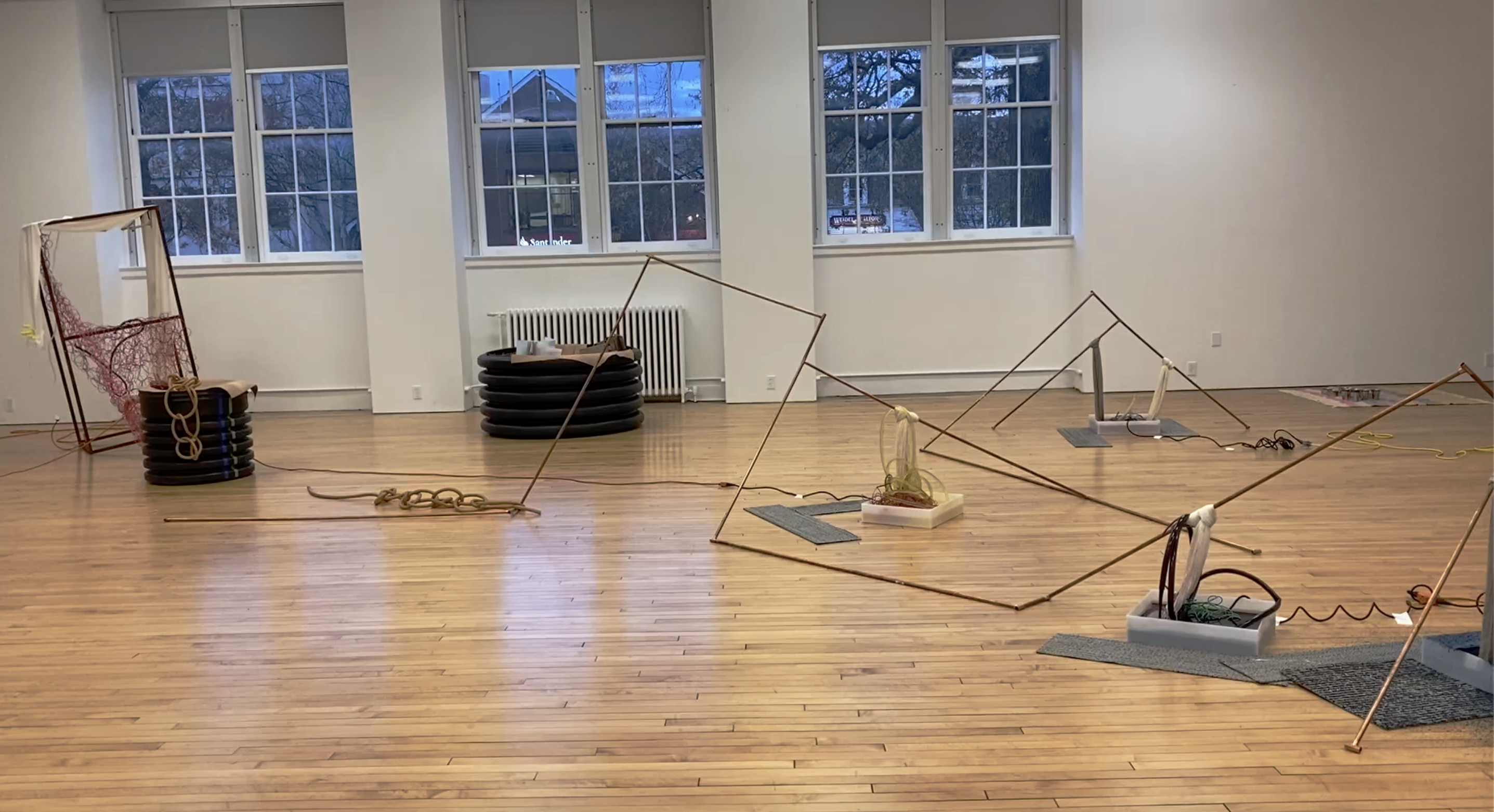
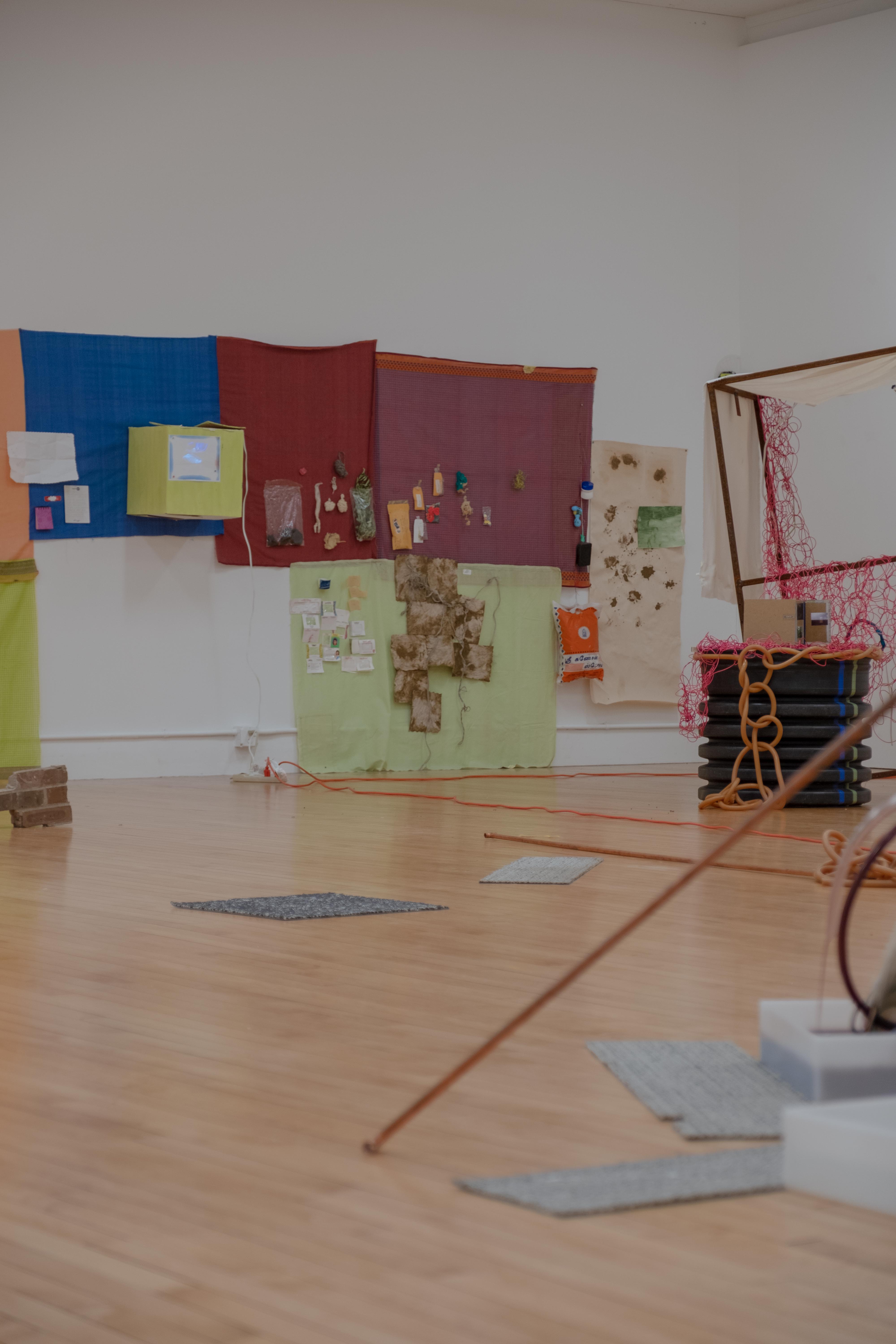

Bindi mirror
1
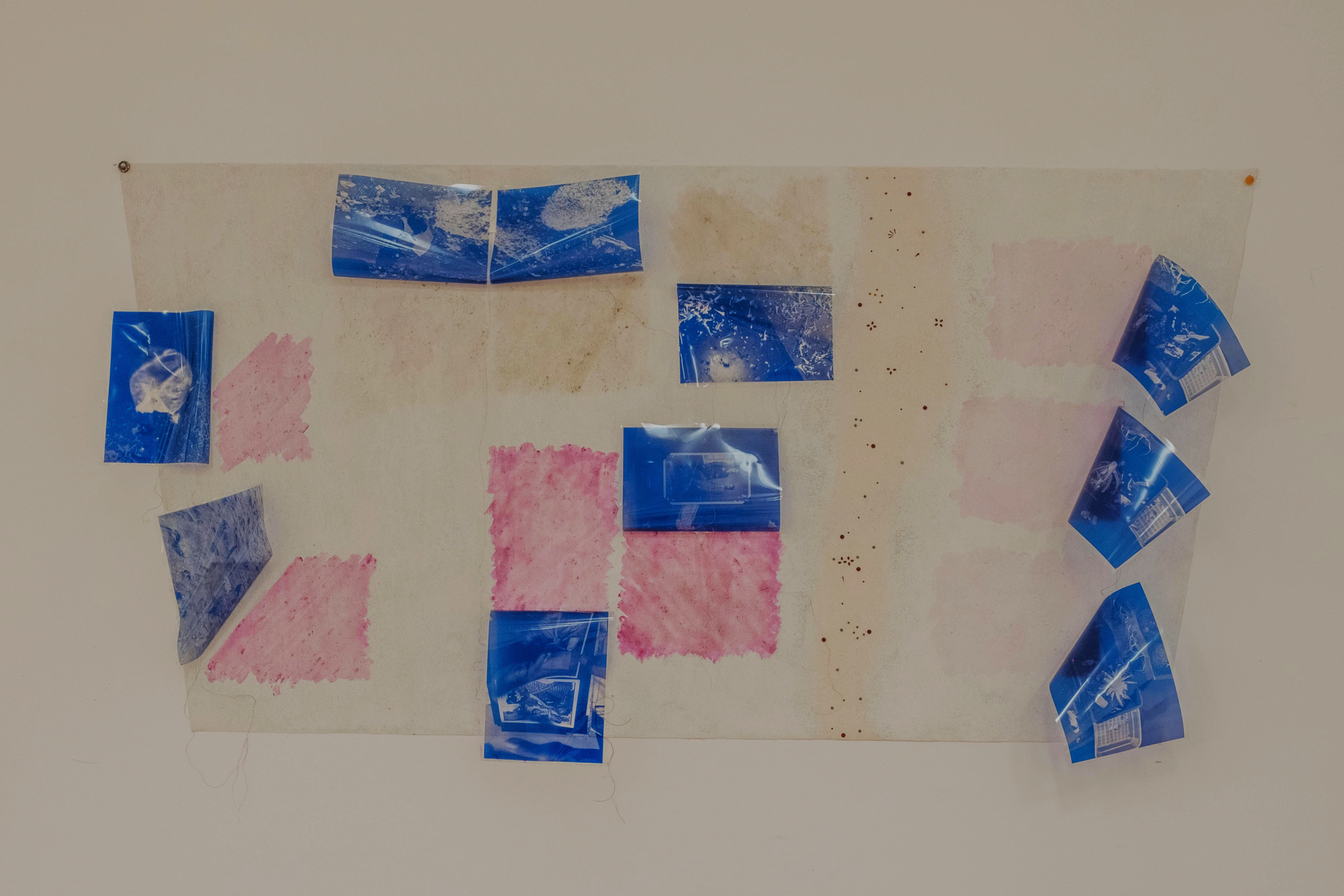
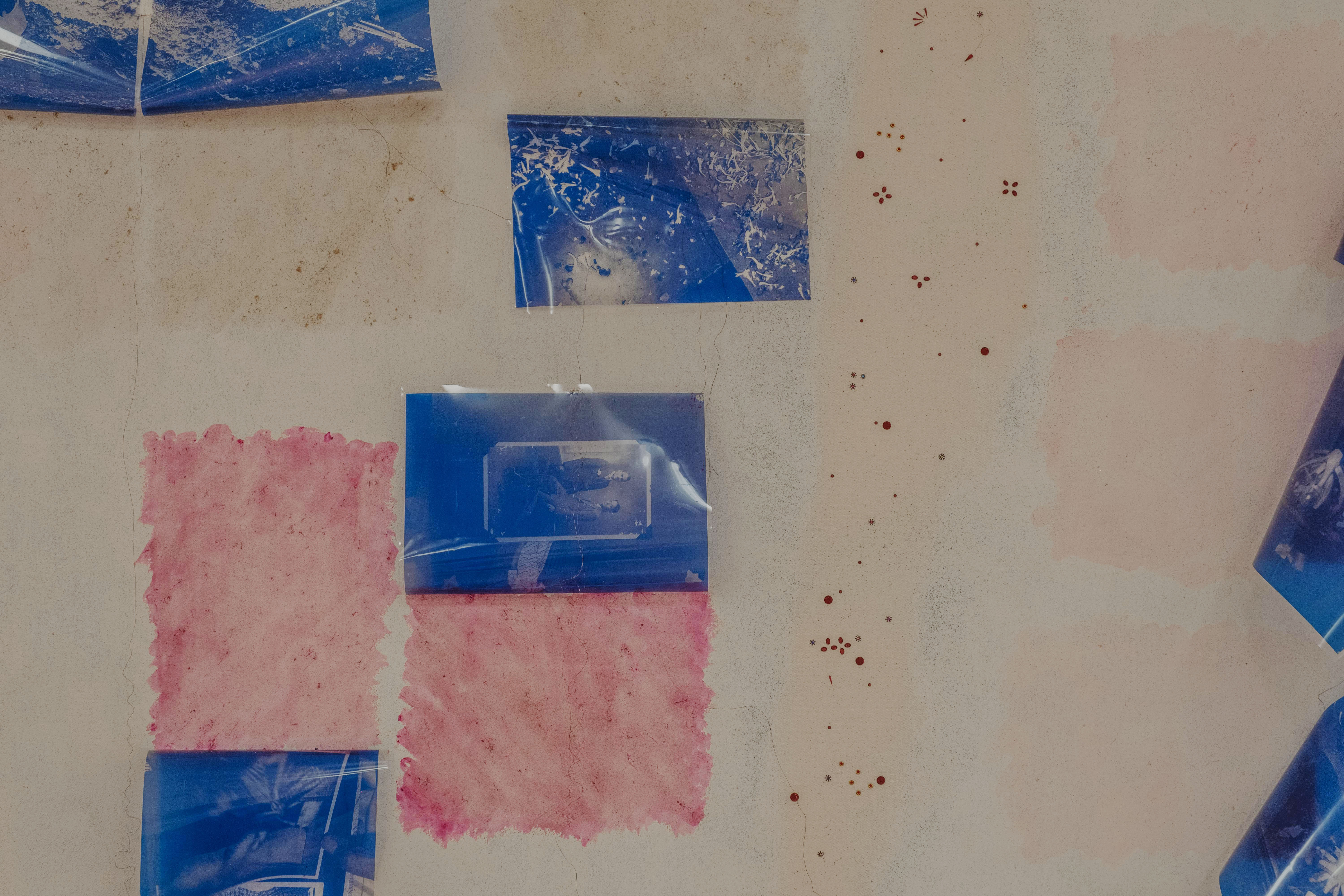
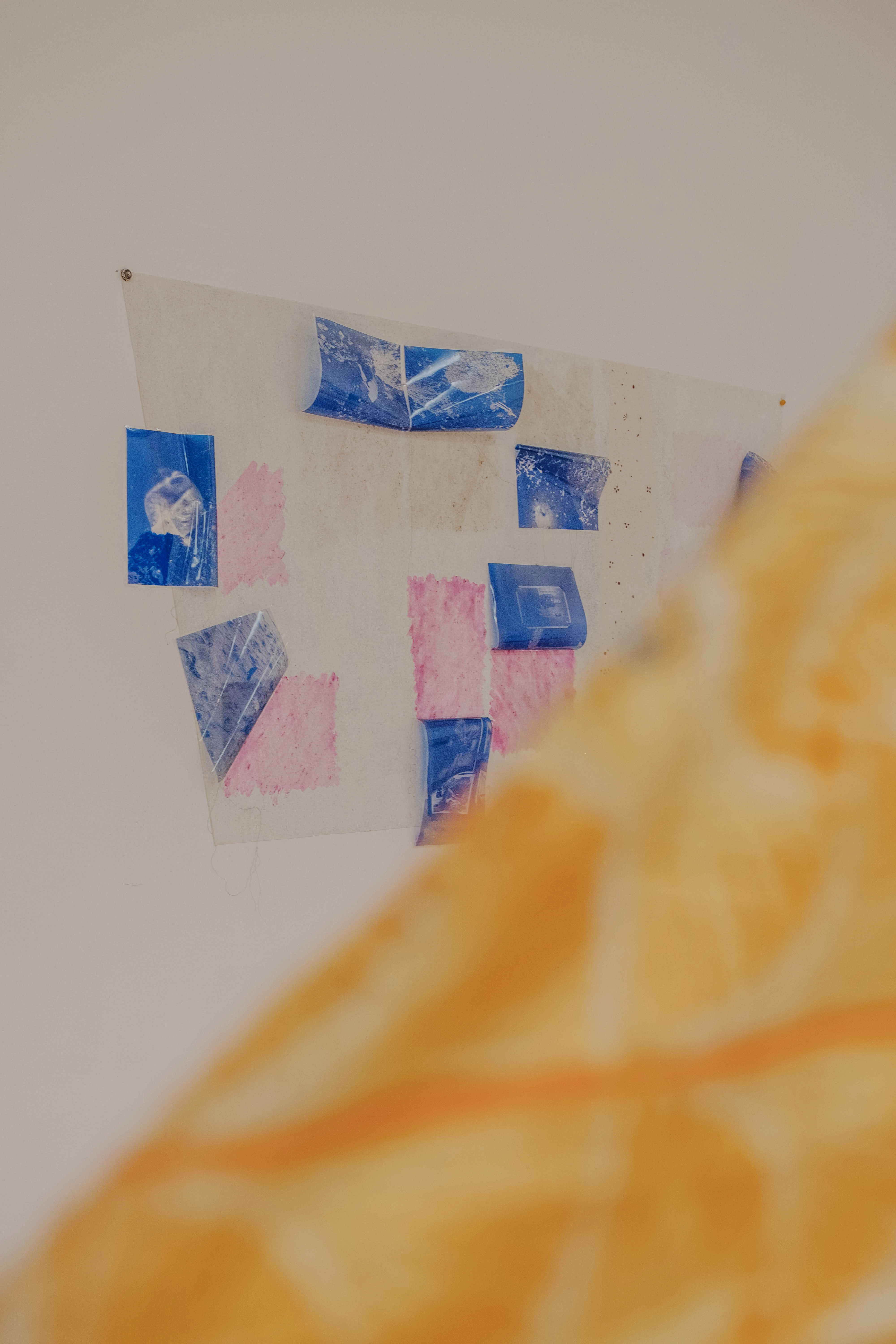
Chaff & light trash | A thesis show by Bhavani Srinivas |
Info |
1 Bindi mirror |
|
“Put the rice in, and run cold water in to fill the pot so that
|
⧚
I quote the title for this show from Edna Lewis’ recipe for wild rice to surface my initial interest in overlaps, contradictions, and confusions between histories of South India, where my parents grew up, and of the Southern United States, where I grew up.
|
Canvas, transparency film, pokeberries, goldenrod, sticker pottus, metallic thread, green marble gesso, beads, methyl cellulose |
Your hair is eating too! | 2 |
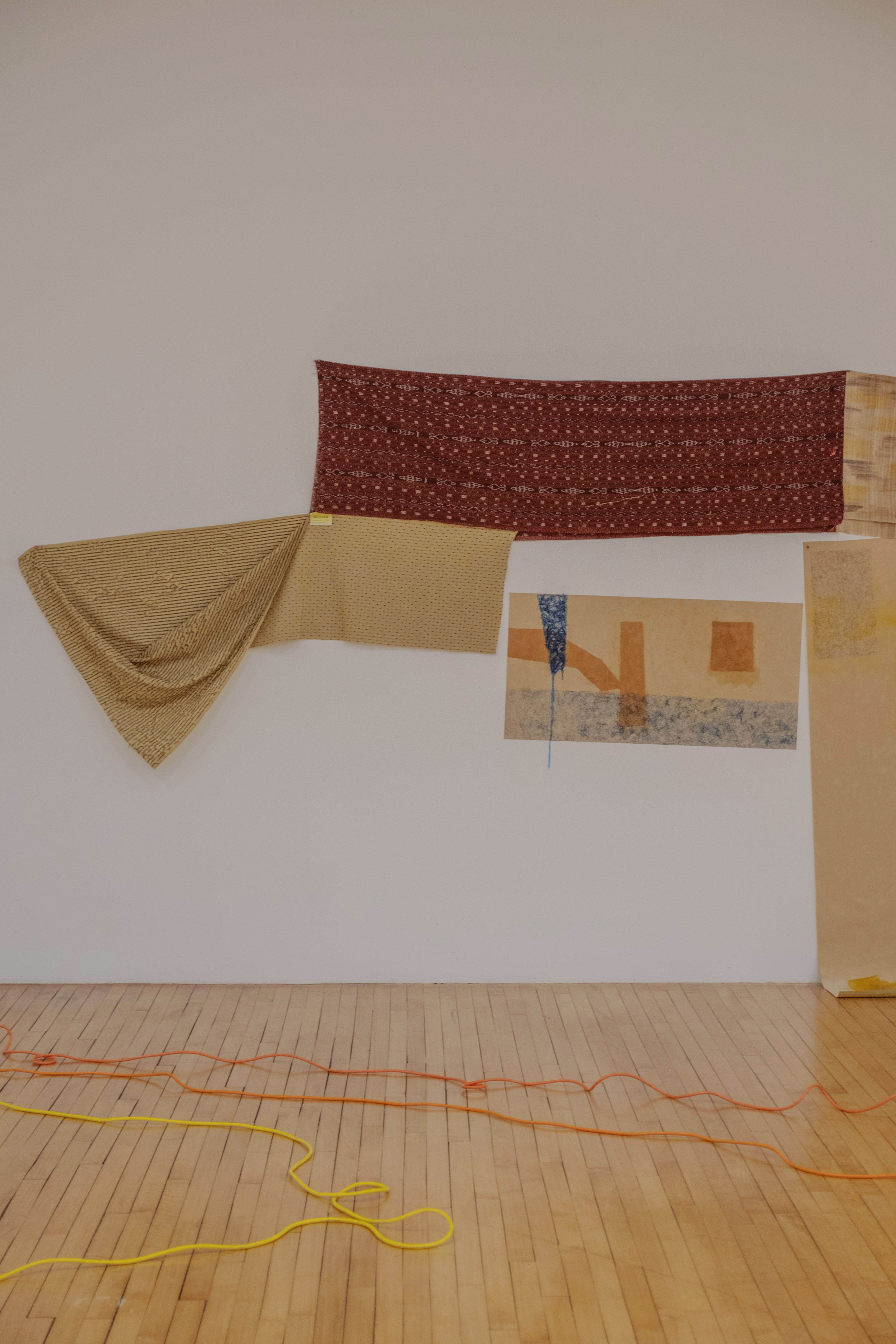 |
|
Thalippu | 3 |
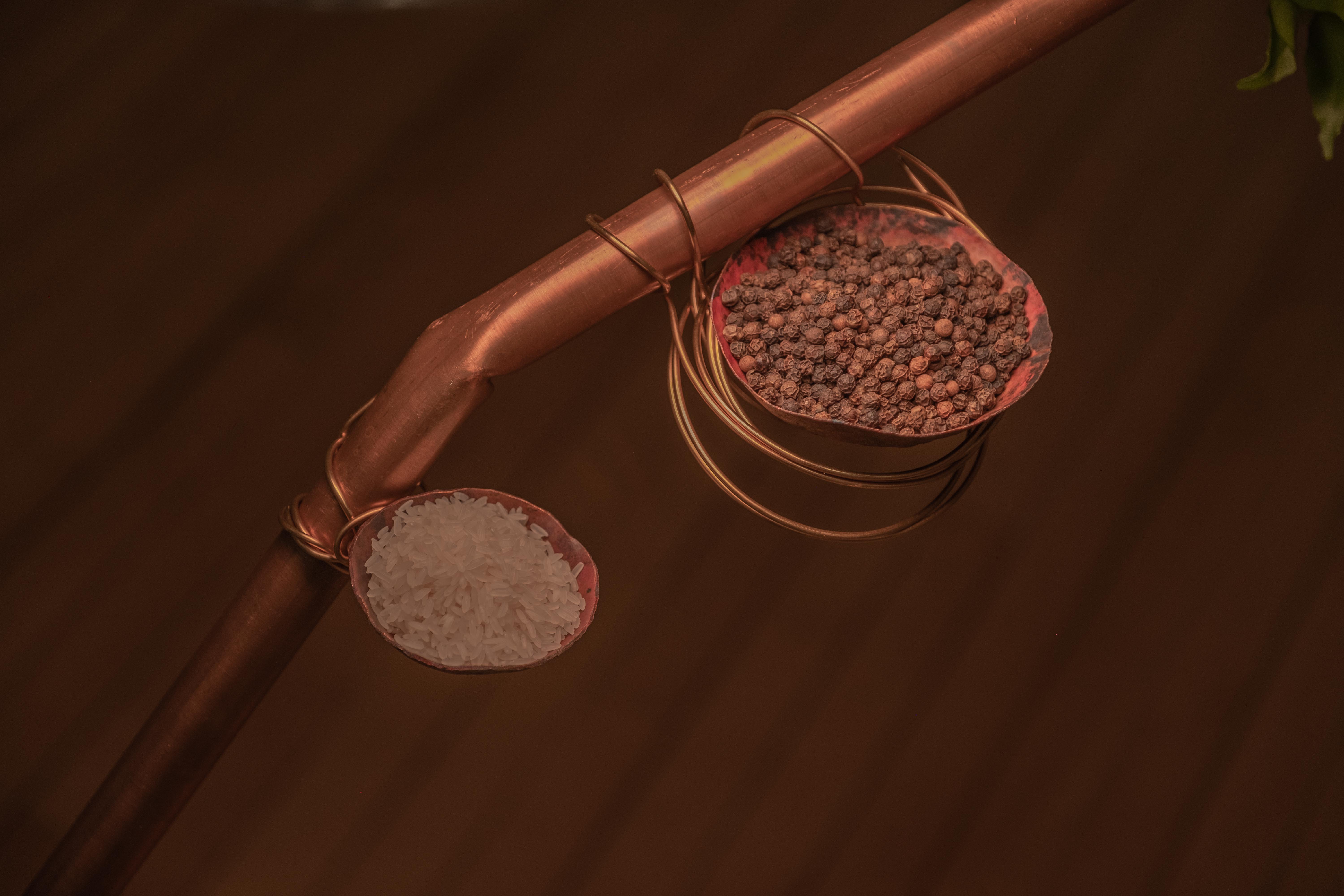 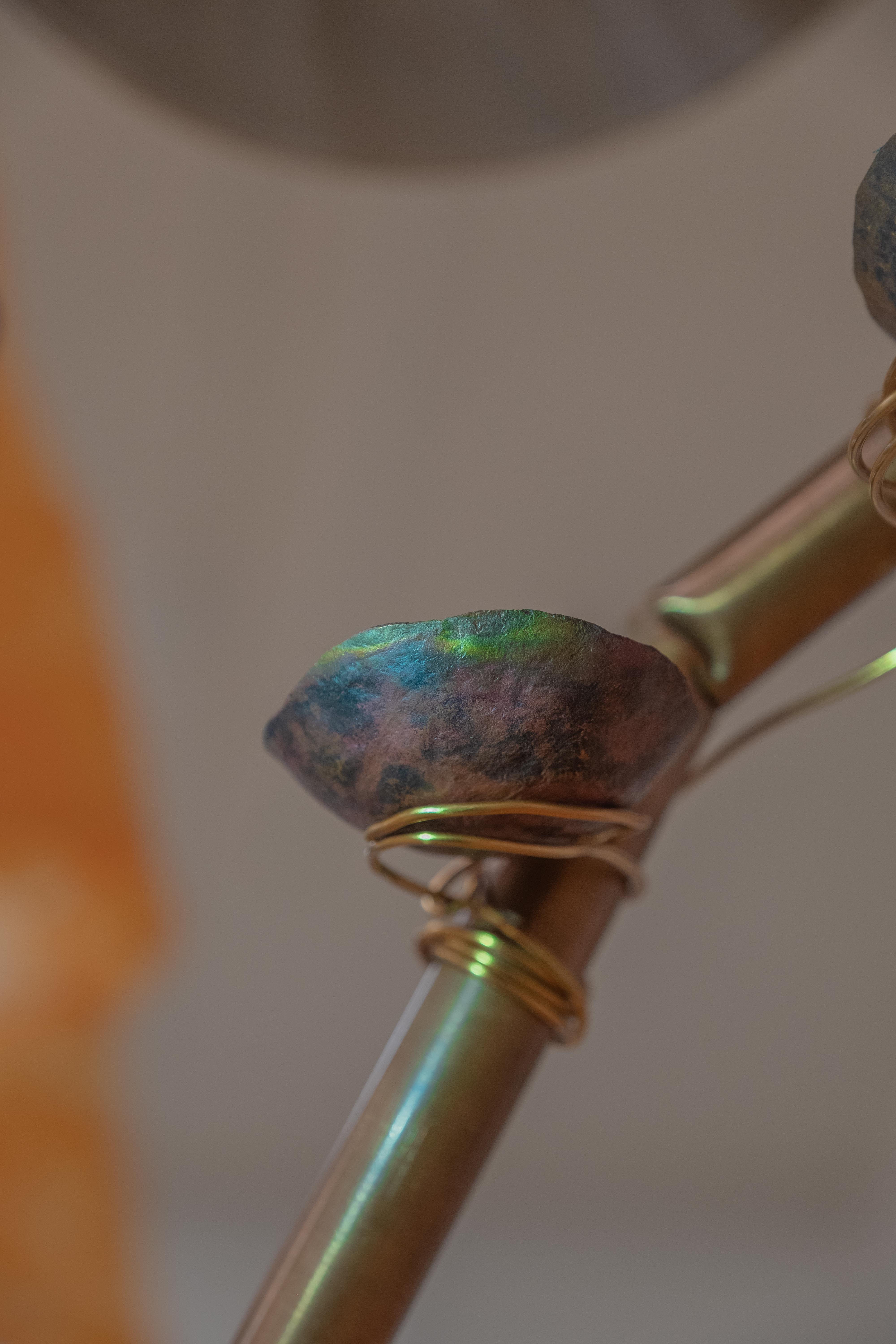 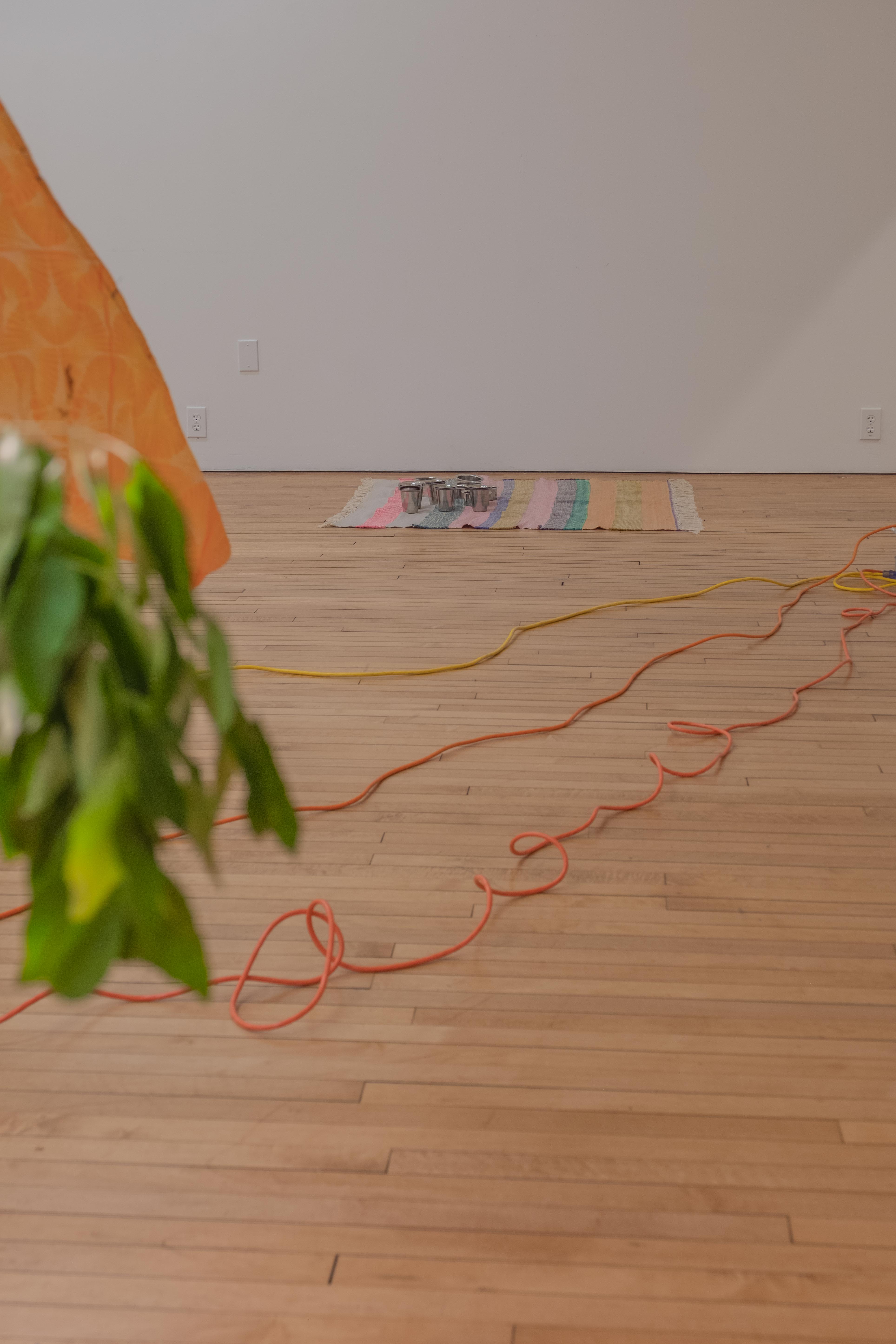 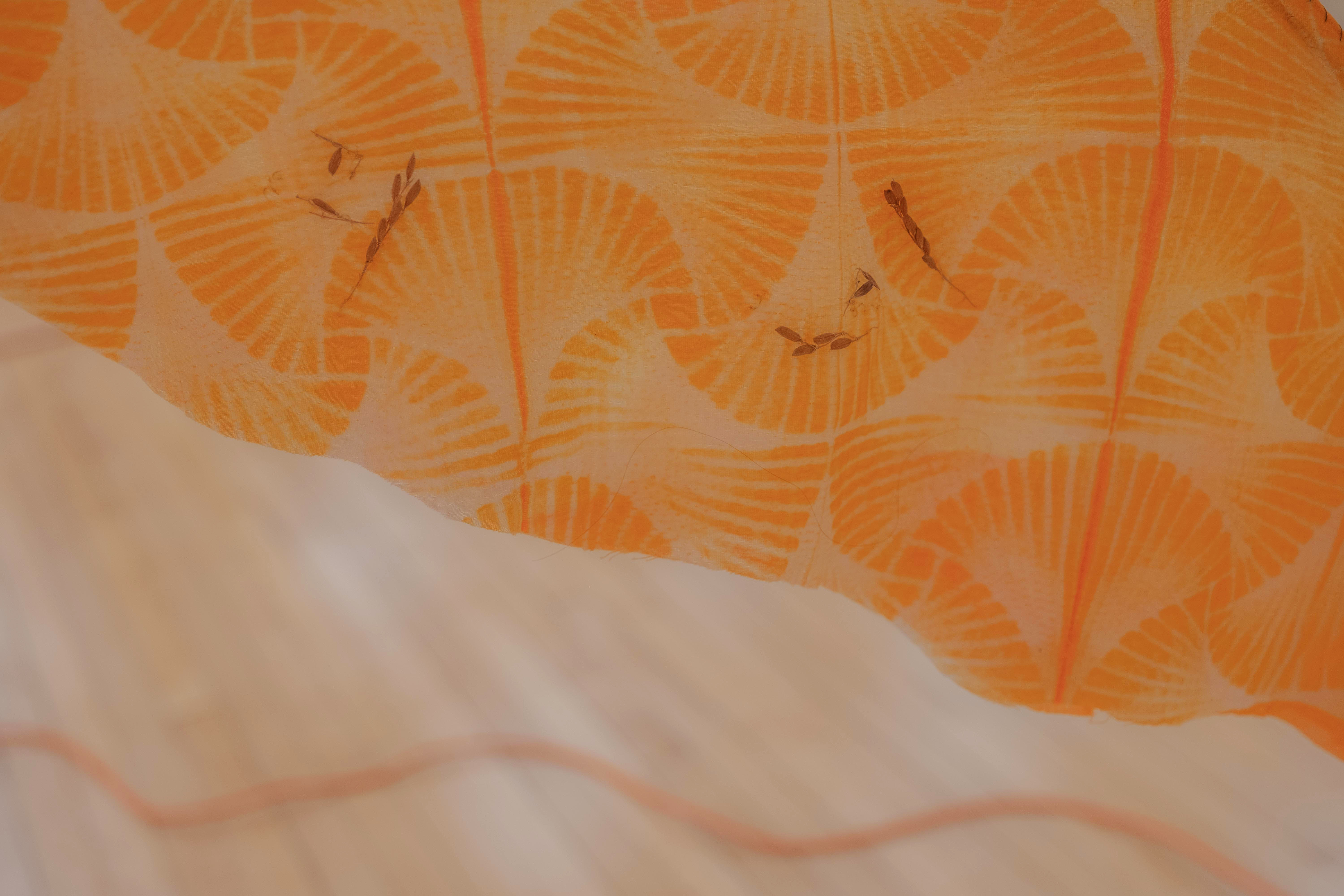 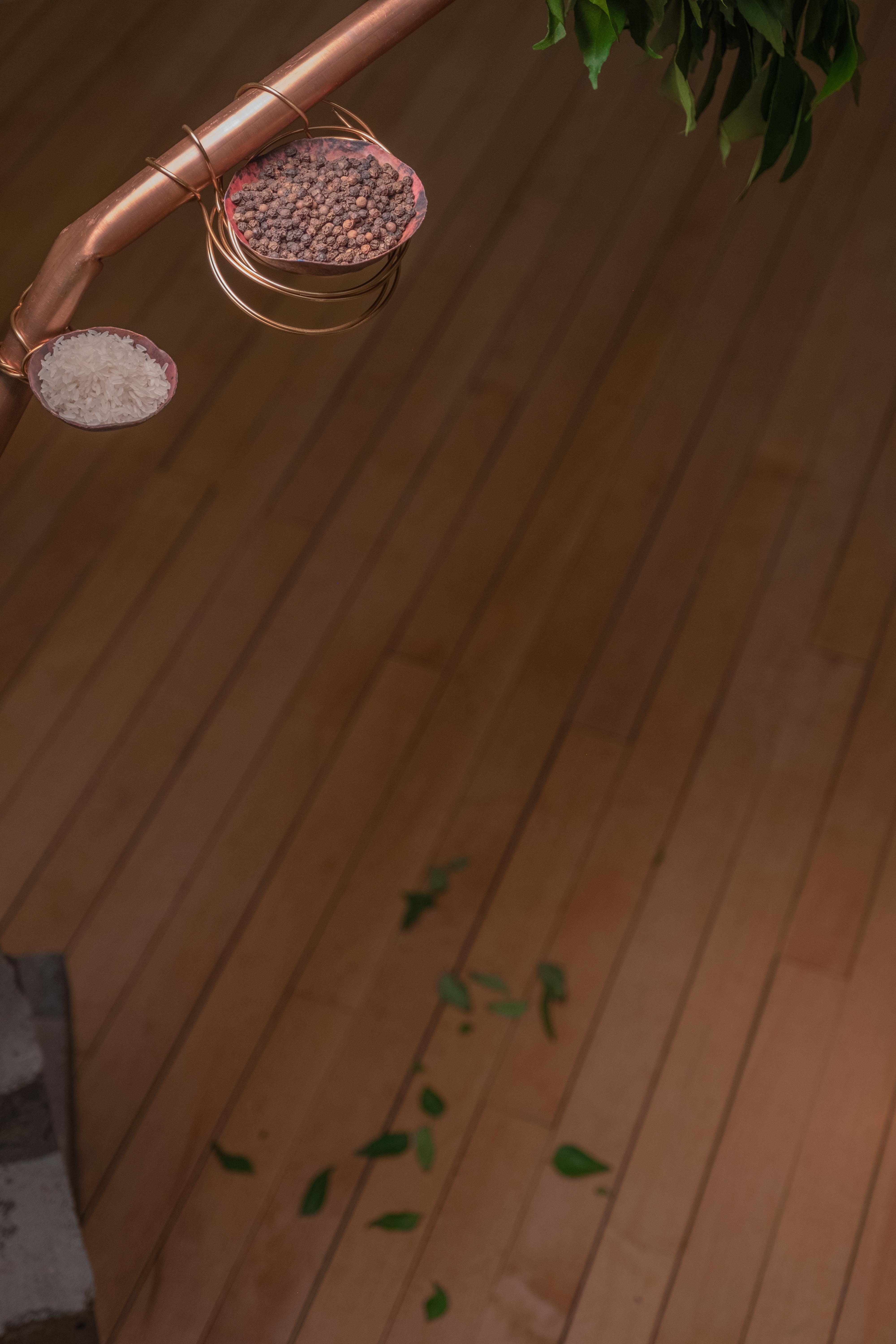
| ⧚
Thalippu is a work about rice, a precarious machine to make ritual out of the foundations of South Indian cooking; Thalippu is the Tamil word for tempering spices.
A lamp heats hand forged copper vessels full of ponni, a South Indian rice varietal, and black peppercorns, and a plume of karuveppilai, releasing their scents. This work is a celebration of this foundational combination, honored with the ritual materials of copper and silk. But the work is makeshift, like Indian-American spaces for gathering and worship familiar to me. I also embed jokes about placeness. I am trying to recreate Tamil Nadu, but the ingredients are all New Jersey, much like the India I know is what my parents were able to conjure in America. I went to high school near Charleston, South Carolina, a city whose wealth is owed to enslaved people who were forced to labor in rice and indigo fields. I embroidered kernels of the particular rice that was cultivated in South Carolina, Carolina Gold Rice, still within its chaff, onto the orange textile, acknowledging the violence that shadows a feast. The textile is a banana leaf, the traditional surface for eating meals, in Indian-made shibori. |
|
|
Ikat printers and loom | 5 |
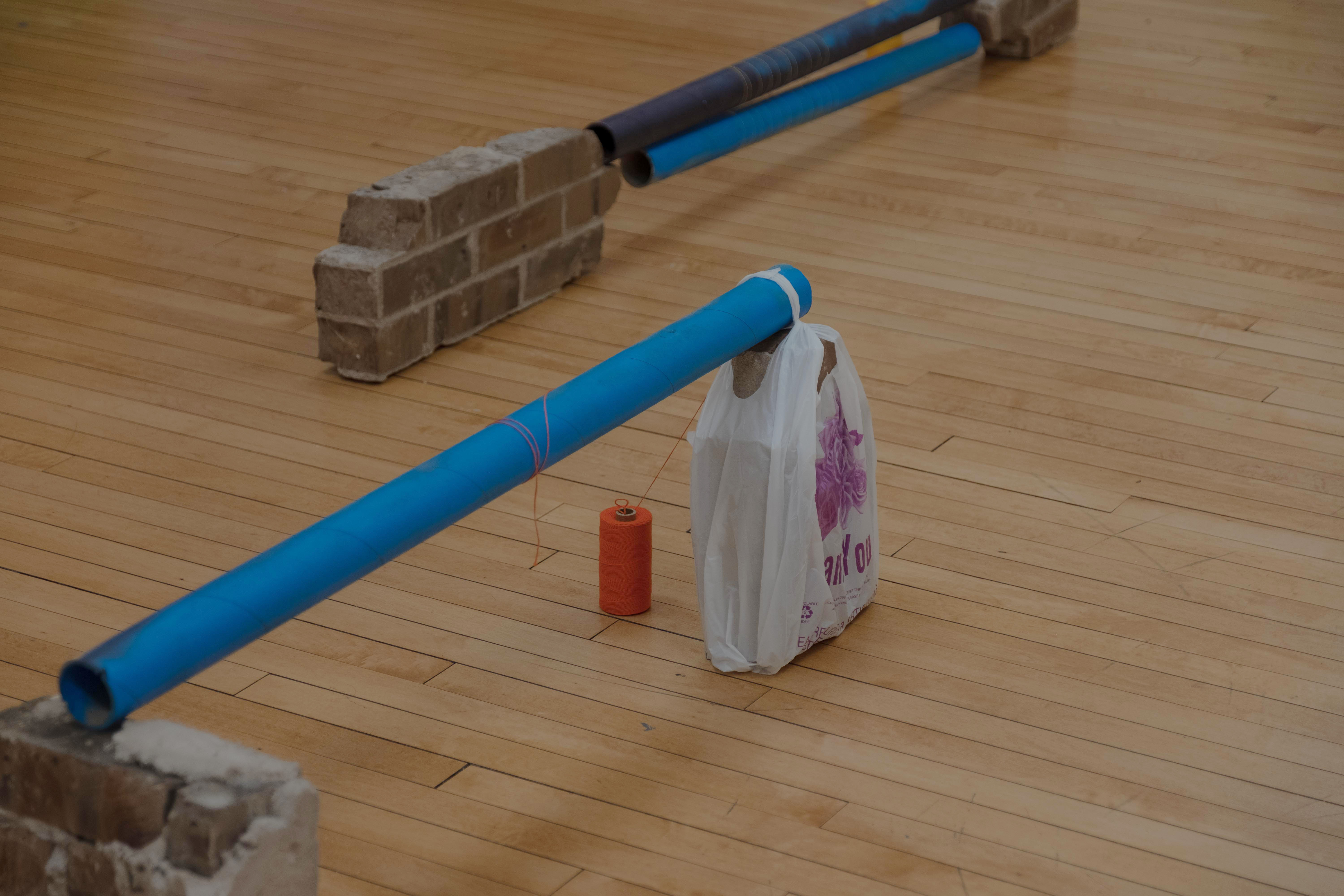  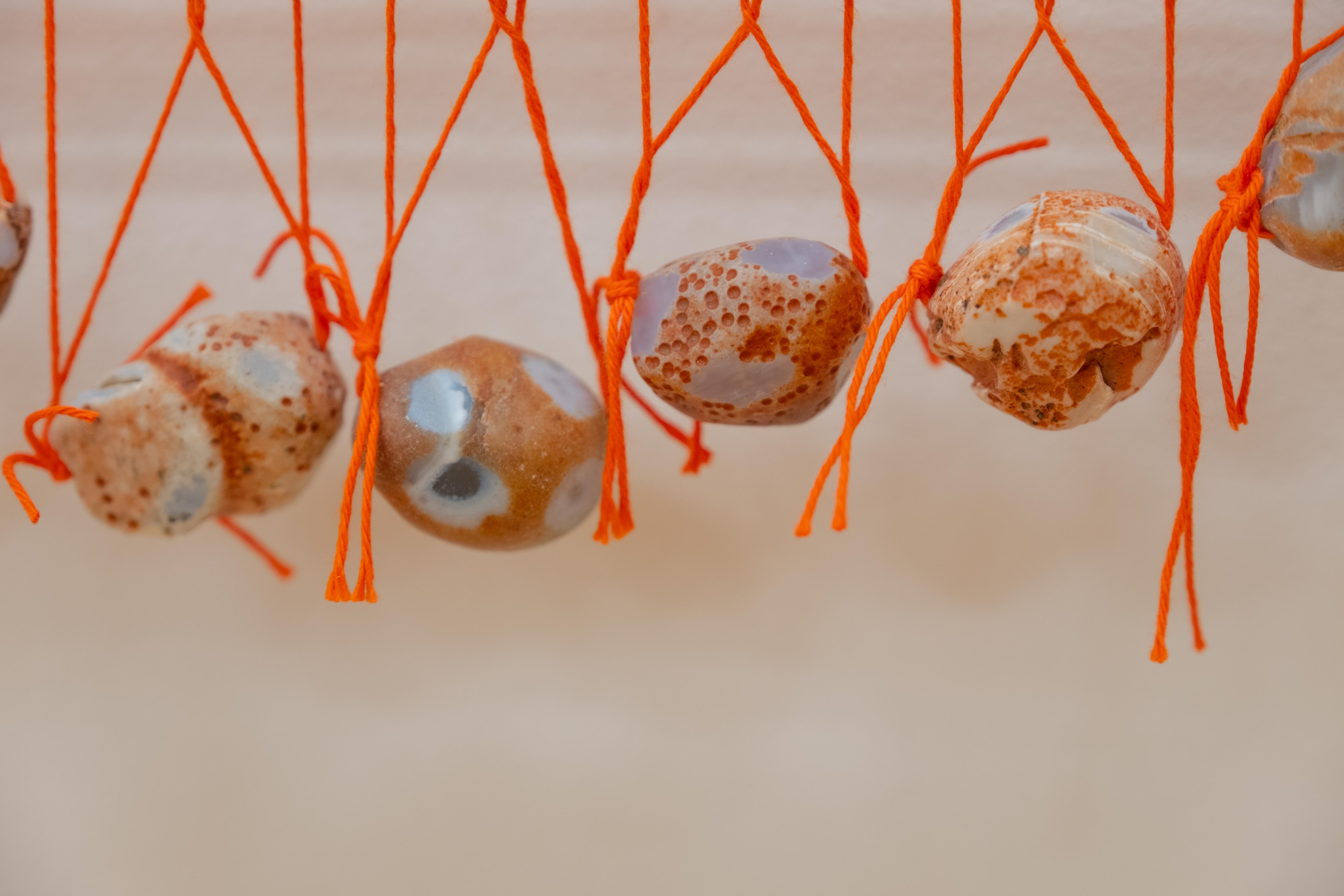
| ⧚
The ikat printers are machines for printing on the threads in a time frame that overlaps with hand weaving. In traditional ikat, threads are tied and dyed; with this method, threads are painted with thickened dye from Imaginary friends. I loop four cardboard tubes, with a circumference equal to the width of the final weaving, through the handles of tote bags weighed down with cinderblocks and bricks. I wind threads closely together by rotating the tubes, then apply dye collected from the fountains to print a pattern.
I make a loom by hanging a copper pipe, draping cotton yarns, and weighing them with these yarns with stone beads. Then threads from the printers are woven two picks at a time to allow a continuous connection to the printer; the thread can be pulled and the pattern can be built indefinitely. ⧚ Read a manual for creating an ikat printer. |
|
Pindam | 6 |
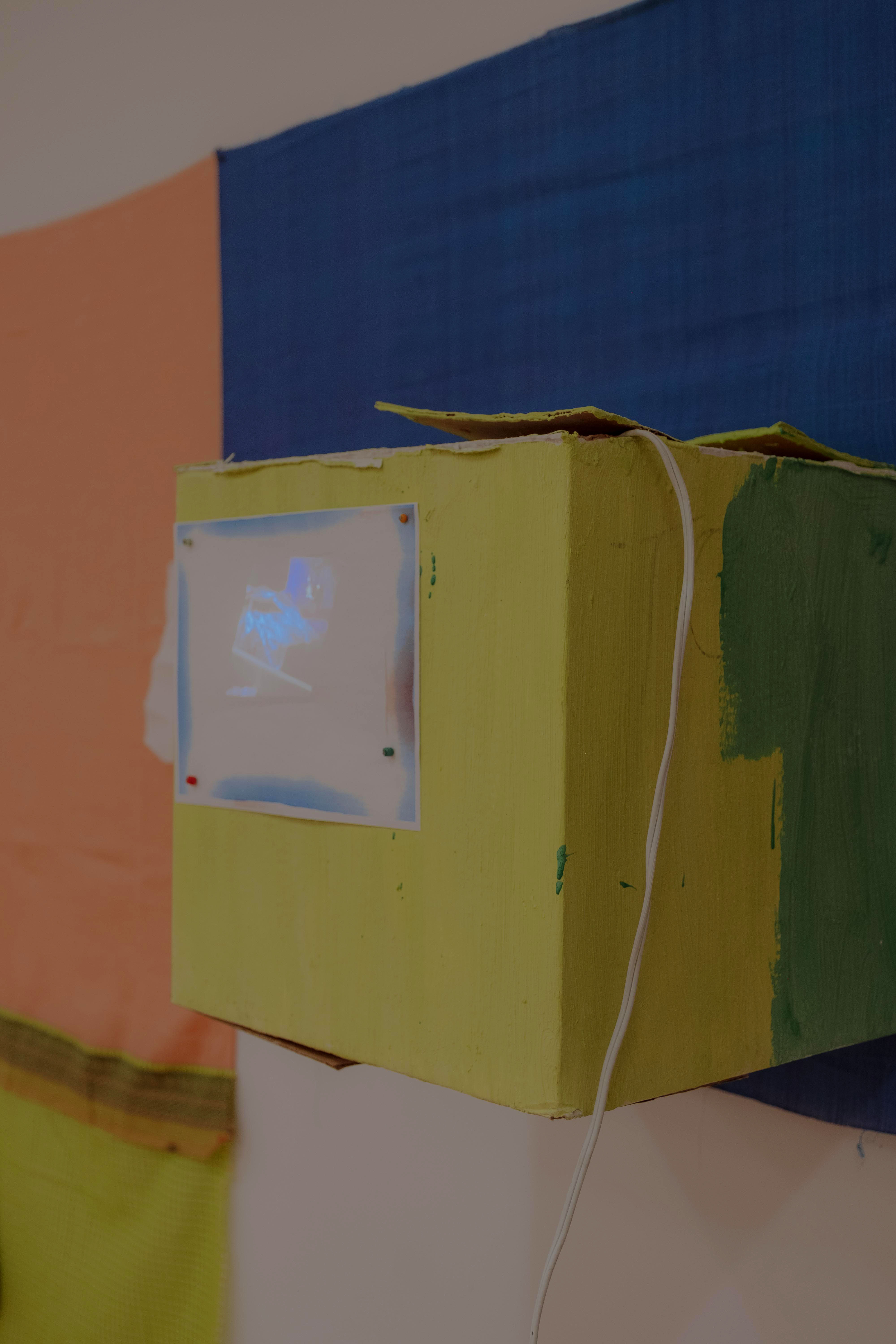 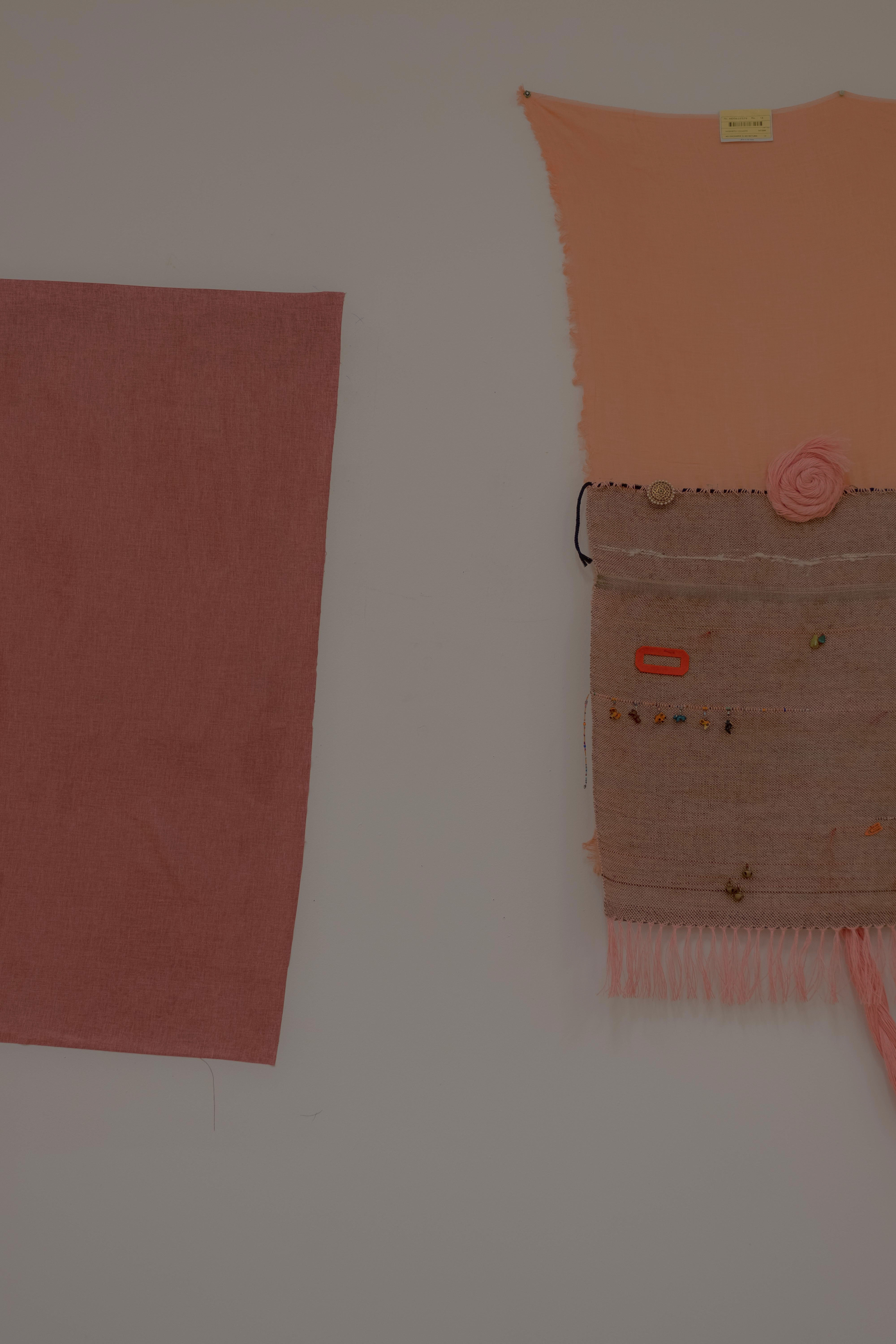  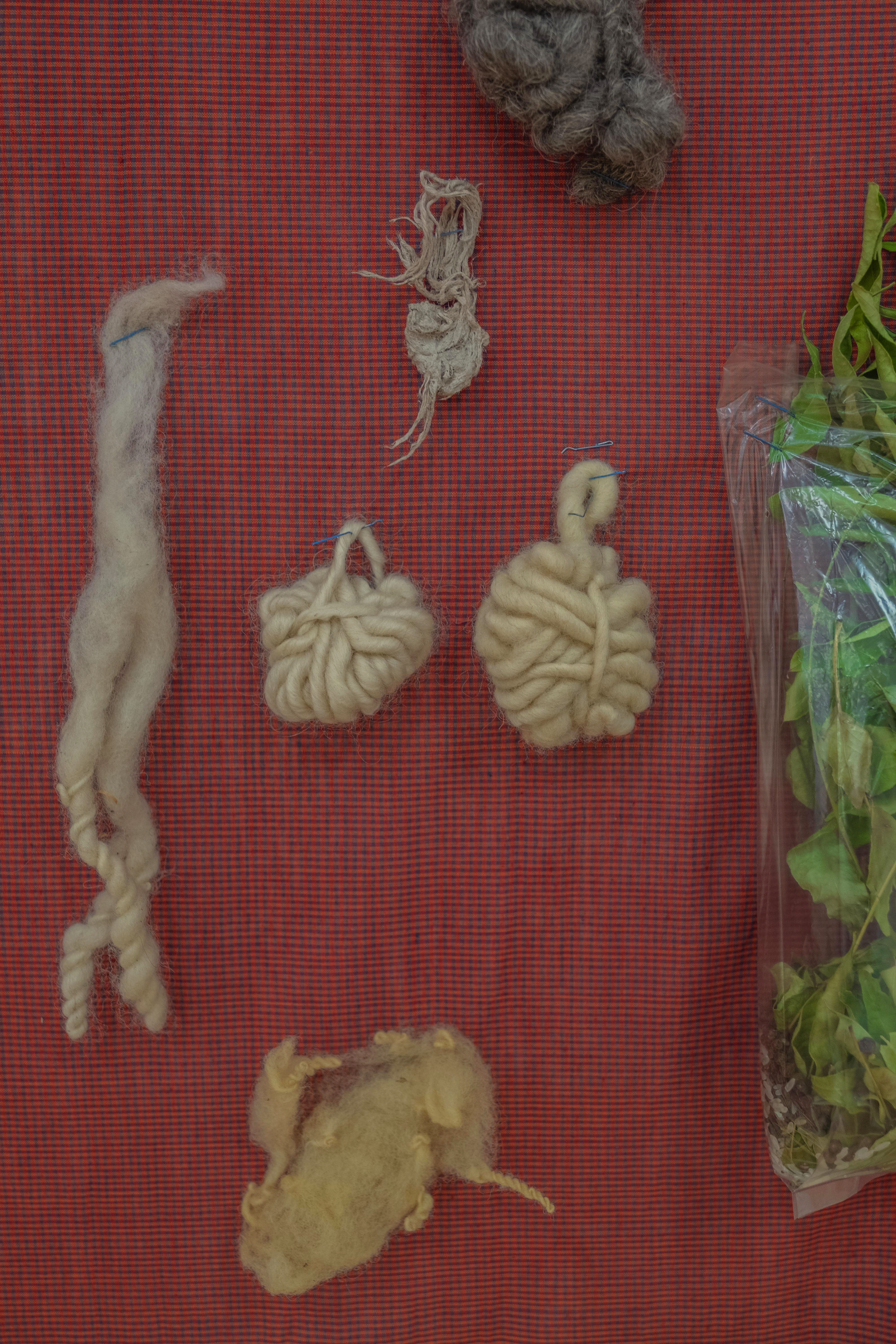 | ⧚
Hoarded objects, video of my mother and grandmother, residues of process, weavings made on a floor loom, and materials collected during travel, collide. Pindam is the Tamil word for a small ball of rice, offerings in Hindu rituals to feed ancestors.
|
Silk, cotton, and synthetic fabric from Nalli 100, Japan and Nepal, bookcloth from Firestone Conservation Lab, glass beads, spray-painted staples, paper towel, silk cotton, paruppu podi, oil paint, collected fibers, wood shavings, dye plant seeds, nastursium seeds, rust, plastic bags, hair, sticker pottu packets, paper, notebook, surya chandra, jewelry, bells, shalangai, PBJ sandwich, jar, linen, wool, cotton, nettle and synthetic yarns, keychains, varsity letters, woodblock, mussel shells, doll heads, sequins, leaves, projectors, cardboard boxes, aqua-resin, acai beads, Lloyd's Register project forms
|
1008 coconuts | 7 |
⧚
I crocheted plastic-coated copper electrical wire, which necessitates a full-body scale of the technique, producing collaborative choreographies between the conductive wire and my body.
|
Electrical wire, plastic coated chain, rhinestone chain, raw silk, plaster gauze casts, cotton thread, raw silk, projector, video, brick wall fragments, steel frame, rubber tubing, leather, culvert drainage pipe
|
Artist books: Please close the door and Wanted, electrical wire, wool yarn, leather, culvert drainage pipe, screws
|
Happy only | 9 |
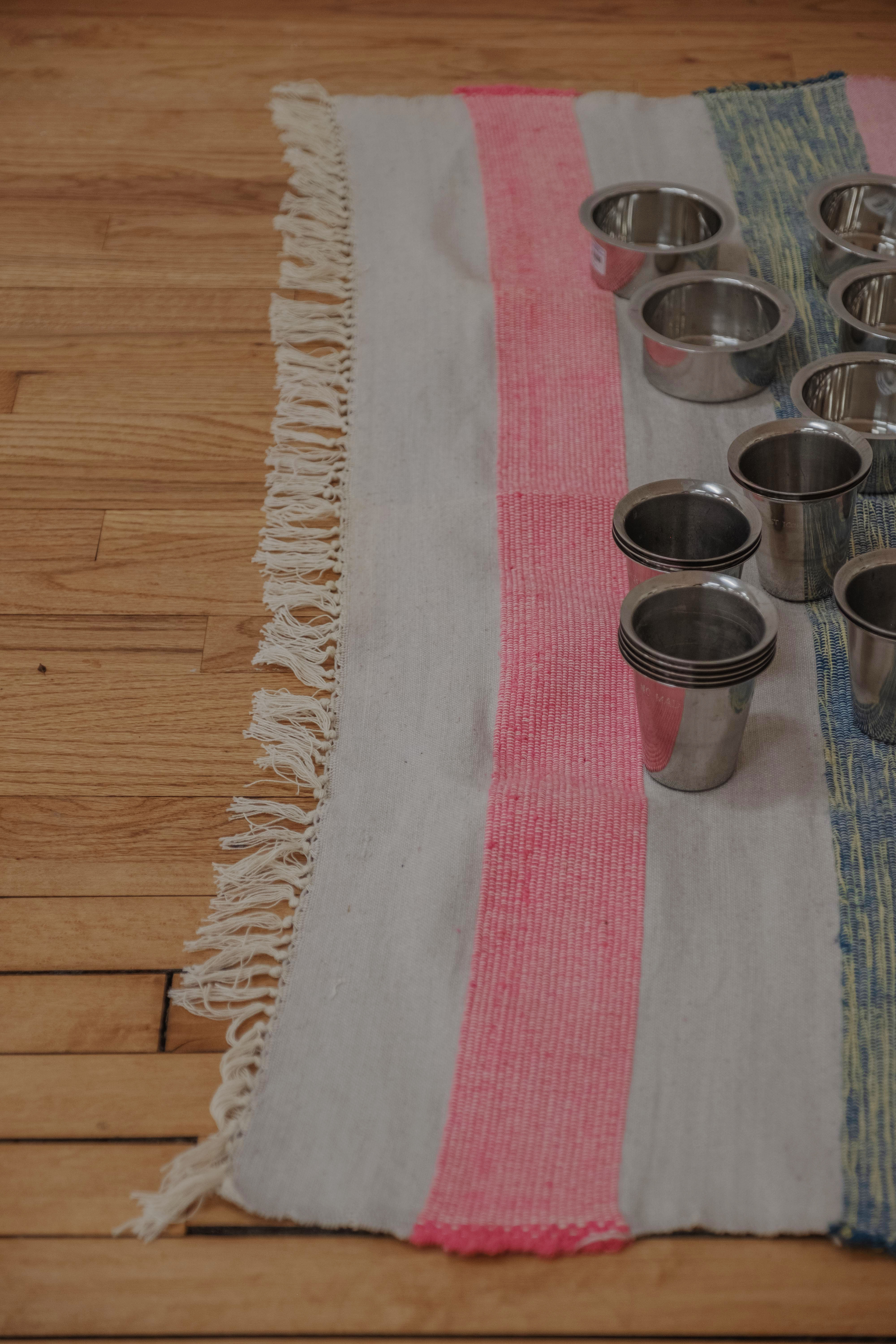
|
| Eversilver engraved by Tamil Arasu. Carpet woven under the instruction of Prasida Chavan. | Stainless steel tumblers and dabaras from Ratna Stores, cotton yarn
|
Lampworked glass, charcoal, sticker pottus, plaster casts, kolam powder, glitter, dragon skin, aluminum foil, duct tape, wooden dowel and block, alginate, silk, indigo, cochineal, walnut hulls, cotton yarn, chemical dye, hand-forged copper, steel wire, fork, foam, carpet
|
Pathologized Caslon | 11 |
This website is typeset in Pathologized Caslon, a distortion of the semibold weight of Carol Twombly's Adobe Caslon Pro that I made for Art Hx.
|
|
⧚
Introduction to the critique by Megan Pai
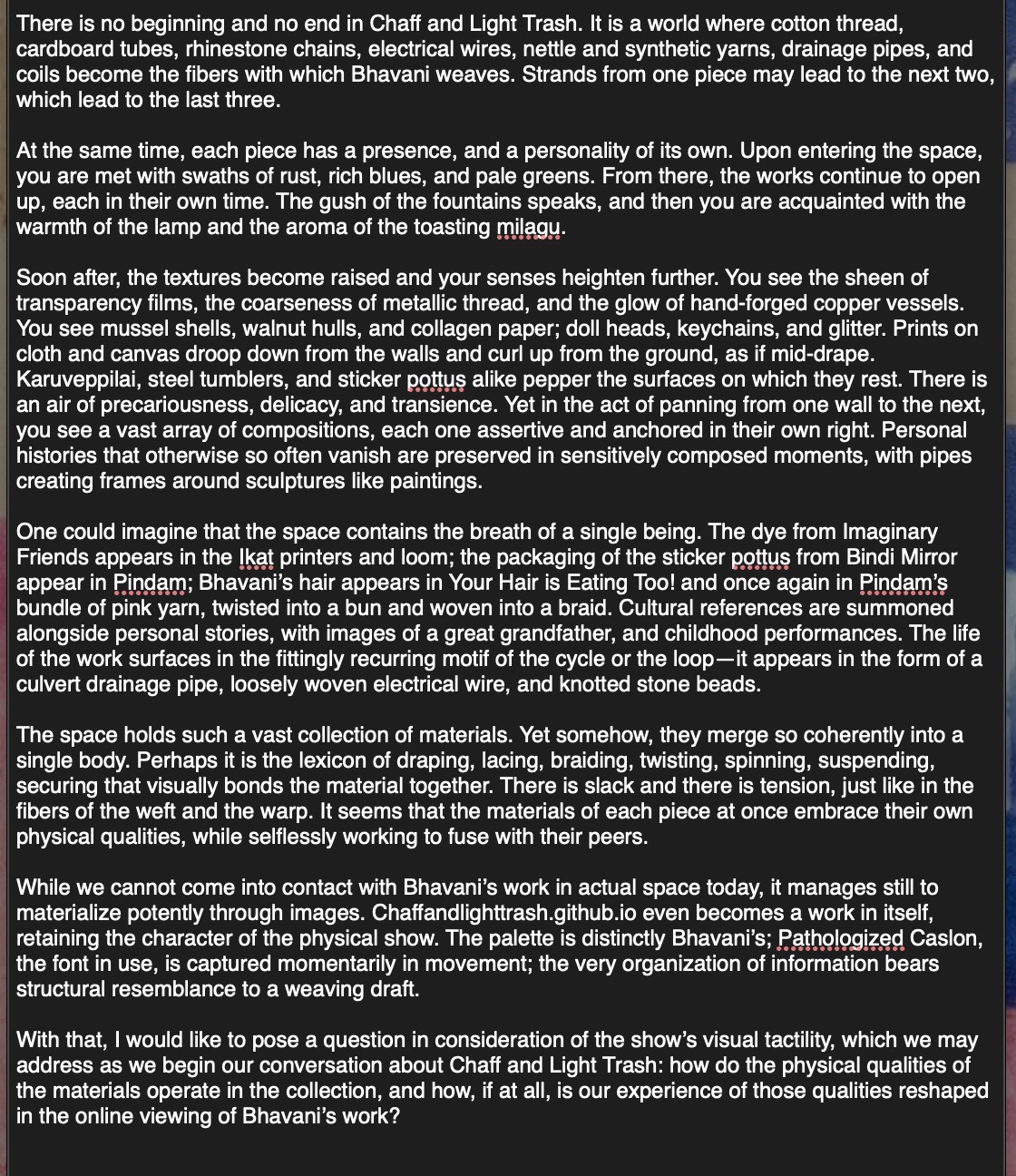
|
Chaff & light trash is a thesis show by Bhavani Srinivas. Chaff & light trash was installed from November 20–23, 2020 in Hagan Gallery at 185 Nassau Street, the building that houses Princeton University's Program in Visual Arts. Hagan Gallery and Princeton University occupy the unceded traditional territory of the Nanticoke Lenni-Lenape Tribal Nation. |
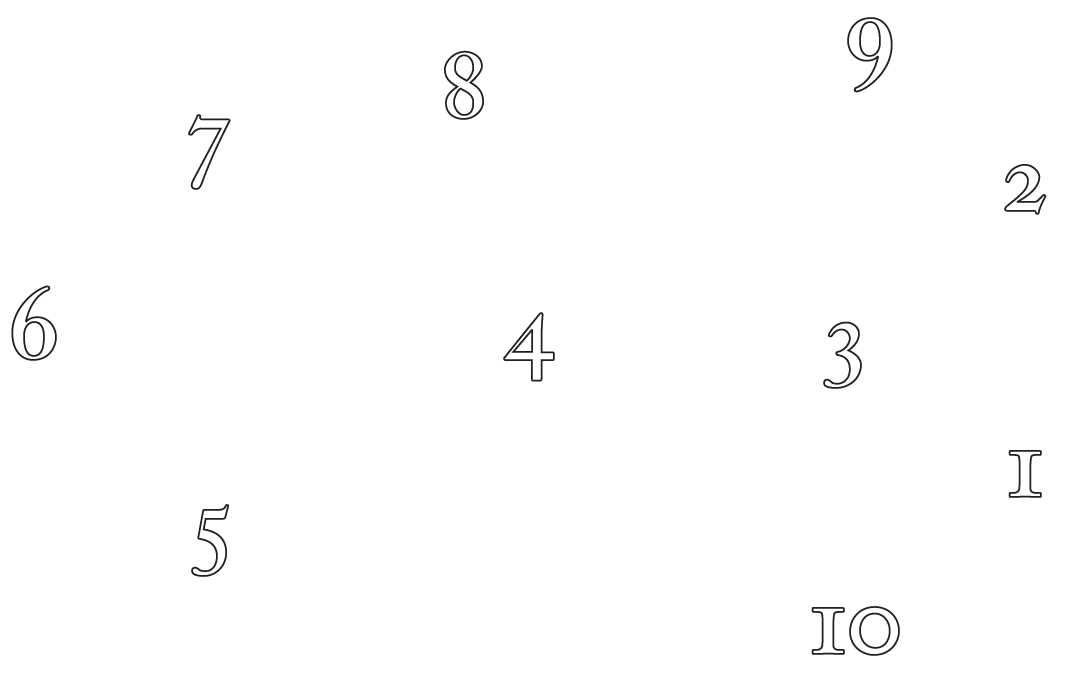 Back to top |
Documentation was photographed by Megan Pai, Victor Guan, and T.R. Srinivas. I thank my advisors, Martha Friedman, David Reinfurt, and Anna Arabindan-Kesson, as well as James Welling, Laura Coombs, and MJ Daines for their generous advice. I am also grateful to the staff at 185, especially Nick Sharpe and Orlando Murgado, Eric Li, Eli Berman, Somi Jun, MC Otani, Ariane Fong, Sharon Musa, Sophie Wheeler, Cammie Lee, Victor Guan, Megan Pai, Jhor van der Horst, Janette Lu, and Gaby Pollner, and my parents, grandparents, and brothers for their support. |
⧚
⧚ View a pdf version of Chaff & light trash.
⧚ See the process of making this website in an are.na presentation. |